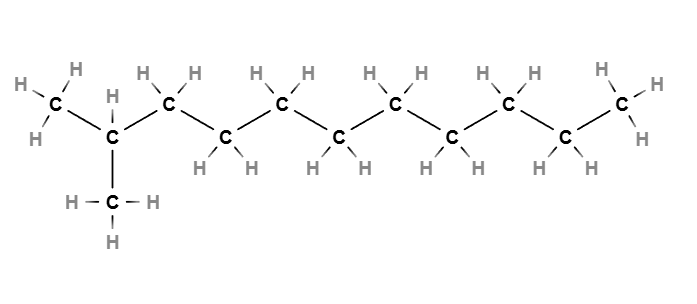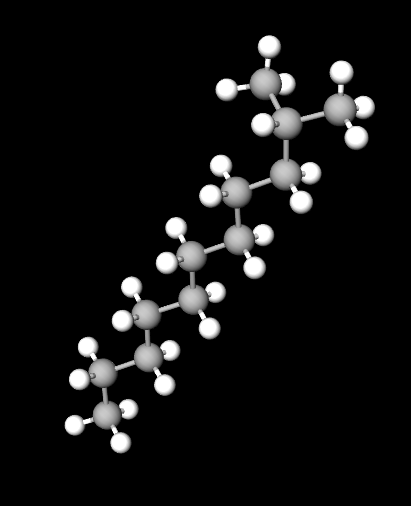Isododecane is a colorless, odorless hydrocarbon used primarily as a solvent and fragrance in cosmetic and personal care formulations. It is valued for its lightweight, non-greasy texture, making it ideal for products such as foundations, lipsticks, and skin treatments.
Chemical Composition and Structure
The chemical composition of Isododecane includes:
- Hydrocarbon Structure: Composed of a branched chain of carbon atoms, specifically a C12 alkane, which provides its fluid and volatile properties.
Structurally, Isododecane is a saturated hydrocarbon, characterized by its branched configuration that contributes to its effectiveness as a solvent and emollient.
Physical Properties
- Appearance: A clear, colorless liquid.
- Solubility: Soluble in oils and organic solvents; insoluble in water.
- pH: Neutral, typically around 7.
- Odor: Odorless.
- Stability: Chemically stable under normal storage conditions and resistant to oxidation.
Production Process
- Synthesis: Isododecane is produced through the oligomerization of propylene, followed by hydrogenation to achieve the desired branched structure.
- Purification: The crude product is then purified through distillation to remove impurities and unreacted materials.
- Formulation: The purified Isododecane is incorporated into various cosmetic formulations, enhancing texture and stability.
Applications
- Medical: Limited use in specific formulations requiring a lightweight emollient.
- Cosmetics: Commonly used in makeup products (foundations, lipsticks) and skincare products for its smooth application and non-greasy feel.
INCI Functions:
Fragrance. It plays a very important role in the formulation of cosmetic products as it allows perfume to be enhanced, masked or added to the final product, improving its commercial viability. The consumer always expects to find a pleasant scent in a cosmetic product.
Solvent. It is the substance for dissolving or dispersing surfactants, oils, dyes, flavourings, bactericidal preservatives in solution.
- Industrial Uses: Occasionally utilized in formulations where a lightweight solvent is needed.
Environmental and Safety Considerations
Isododecane is generally regarded as safe for topical application in cosmetics when used according to recommended guidelines. It is well-tolerated by most skin types, but individuals with sensitivities to hydrocarbons should exercise caution. Responsible sourcing and production practices are essential to ensure that the ingredient is free from harmful contaminants and produced sustainably.
Molecular Formula C12H26
Molecular Weight 170.33 g/mol
CAS 31807-55-3
UNII H40FL8477B
EC Number 250-816-8
Synonyms:
Undecane, 2-methyl-
2-Methylundecane
References__________________________________________________________________________
Das, A., Polacchi, L., Courreges, C., Fouron, J. Y., Tournier-Couturier, L., Billon, L., & Luengo, G. S. (2024). Evaporative Drying Induced Self-Assembly of Epicuticular Wax: A Biomimetic Approach in Tuning Surface Roughness. Langmuir, 40(14), 7581-7594.
Abstract. Epicuticular wax is an example of a naturally created functional material that forms a layer on the outermost surface of plants with the objective to protect them from adverse environmental conditions, such as UV–solar radiation, uncontrolled water loss, microbial attacks, and so forth. Their functionalities are often attributed to the chemical composition of the wax as well as the physical structuration formed by the wax crystals on the surface. With this work, we present a simple, one-step biomimetic approach to replicate similar surface structures, on model substrate, using wax extracted from Euphorbia Cerifera (Candelilla wax). First, we describe formation of structured wax due to self-assembly induced by evaporative drying on quartz plates. Subsequently, we highlight the fundamental physical parameters required to tune the surface morphology. Our experiments reveal that it is possible to achieve considerably diverse surface morphologies depending on the solvent properties and deposition temperature. This diversity is due to the kinetics of recrystallization of wax during evaporation of solvent which, in turn, is primarily driven by the solubility of wax as well as evaporation rate of the solvent. Thus, the final morphology that we obtain is an interplay between recrystallization kinetics and solvent evaporation. Additionally, the degree of crystallinity of the structured films could also be tuned by solvent polarity. Surprisingly, X-ray diffraction indicates that the crystalline structure at the molecular level remains similar to that of bulk Candelilla wax. Our results provide fundamental insights into the replication of epicuticular wax films and identification of tuning parameters to obtain different surface morphologies with the same wax material for potential bioinspired multifunctional coatings in cosmetic applications.
in the study: ...As the isododecane layer remains intact during its progressive evaporation, self-assembly …
Kim, E. S., Cho, M., Choi, I., & Choi, S. W. (2024). Fabrication of Perfluoropolyether Microfluidic Devices Using Laser Engraving for Uniform Droplet Production. Micromachines, 15(5), 599.
Abstract. A perfluoropolyether (PFPE)-based microfluidic device with cross-junction microchannels was fabricated with the purpose of producing uniform droplets. The microchannels were developed using CO2 laser engraving. PFPE was chosen as the main material because of its excellent solvent resistance. Polyethylene glycol diacrylate (PEGDA) was mixed with PFPE to improve the hydrophilic properties of the inner surface of the microchannels. The microchannels of the polydimethylsiloxane microfluidic device had a blackened and rough surface after laser engraving. By contrast, the inner surface of the microchannels of the PFPE-PEGDA microfluidic device exhibited a smooth surface. The lower power and faster speed of the laser engraving resulted in the development of microchannels with smaller dimensions, less than 30 μm in depth. The PFPE and PFPE-PEGDA microfluidic devices were used to produce uniform water and oil droplets, respectively. We believe that such a PFPE-based microfluidic device with CO2-laser-engraved microchannels can be used as a microfluidic platform for applications in various fields, such as biological and chemical analysis, extraction, and synthesis.
![]() Isododecane
Isododecane 


